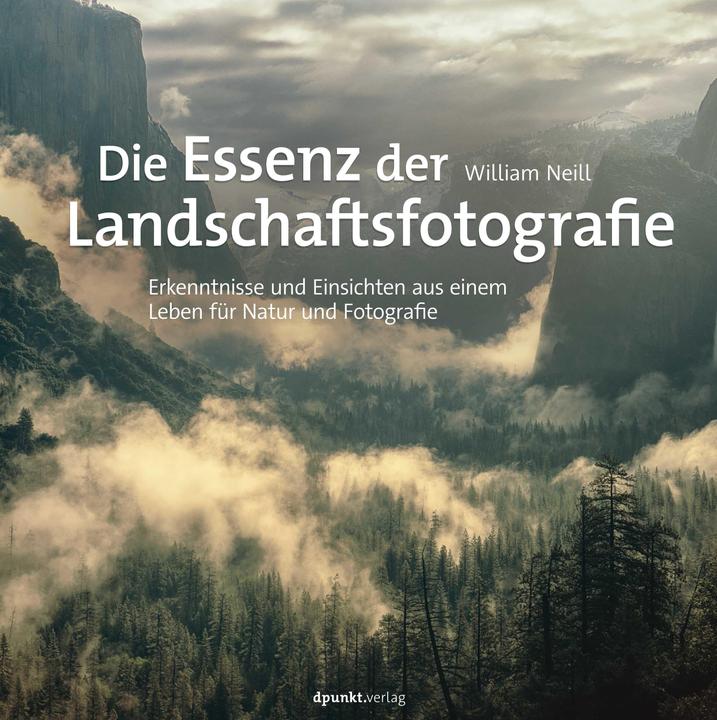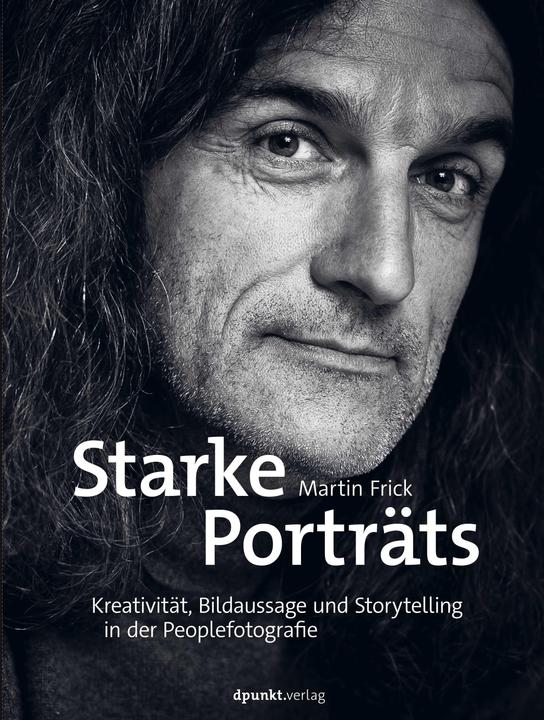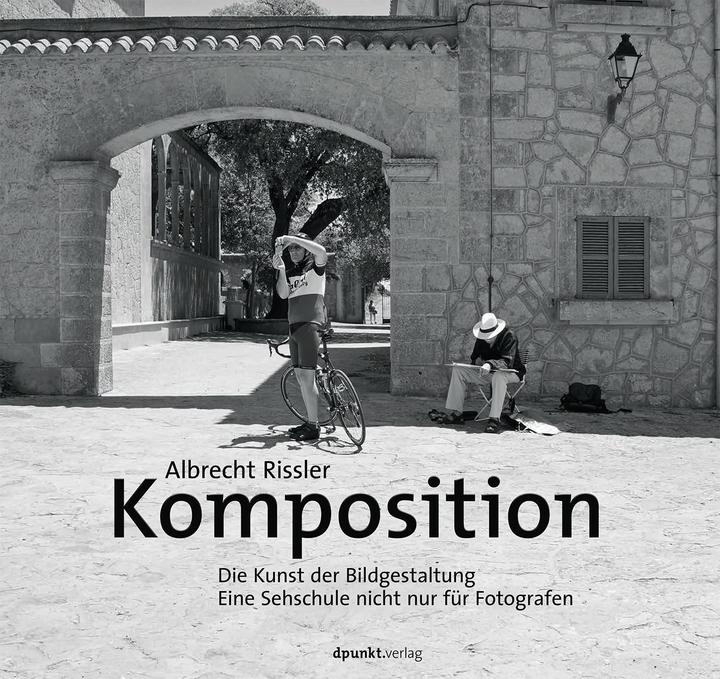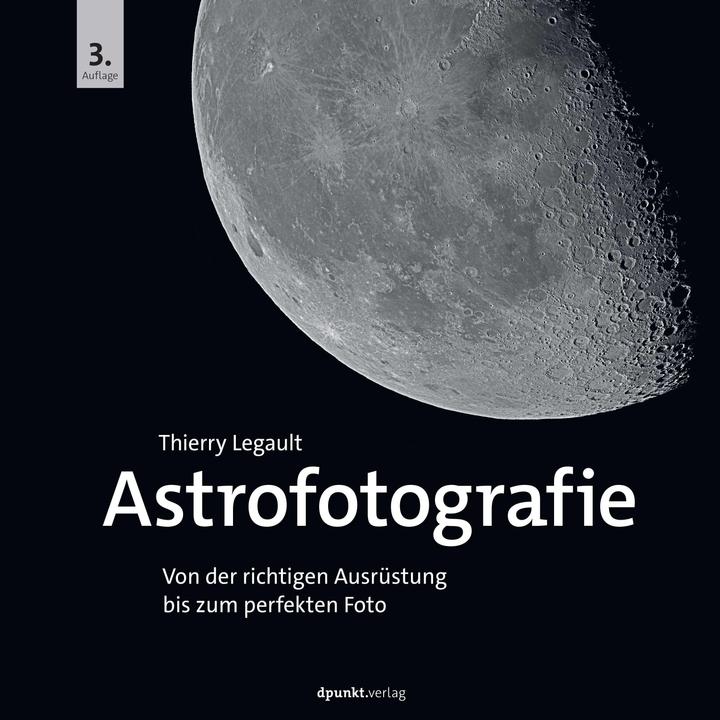
Best dPunkt products in the Non-fiction category
On this page you'll find a ranking of the best dPunkt products in this category. To give you a quick overview, we've already ranked the most important information about the products for you.
1. dPunkt Die Essenz der Landschaftsfotografie
The Conclusion of a Life in Nature and Landscape Photography
Benefit from the insights and photographs of a renowned student of Ansel Adams. 128 photos and their backstories that embody the essence of a photographer's life. Develop your personal perspective and creative voice.
For over two decades, American nature photographer William Neill has shared his insights and ideas about photography and the beauty of nature through his essays. They address technical, economic, and philosophical aspects of photography and represent the essence of a long life as a nature and landscape photographer. Immerse yourself in the world of his landscape photography, learn the backstories behind the images, and gain insight from an experienced and highly awarded professional.
These essays, presented here for the first time in a collected format, offer you an intimate glimpse into the author's creative process and invite you to engage in discussions about the overarching themes that form the key to Neill's philosophy and approach to work.
"The Essence of Landscape Photography" thoroughly explores essential photographic fundamentals such as light, composition, perspective, and exposure, while also addressing topics like portfolio development, marketing, fine art printing, environmental responsibility, inspiration, and much more.
With 128 beautiful and inspiring photographs, the essays convey the insights of a deeply contemplative photographer who has spent his life observing and capturing nature through the lens of his camera. Benefit from his insights and create not only technically brilliant photos but also images that reveal your personal perspective and creative voice.

2. dPunkt Das Nikon D5300 Handbuch
With the D5300, Nikon presents a new version of the successful D5000 series, aimed at dedicated hobby photographers. A Wi-Fi and GPS module are now integrated directly into the camera. Many details have also been optimized. If you want to learn how to effectively utilize all the interesting features of the camera, this comprehensive manual is perfect for you. Nikon expert Michael Gradias has tested the camera in practice and describes step by step how to set up the D5300 for your needs and use it skillfully in various photographic situations. He illustrates the diverse possibilities with numerous photos, providing inspiration for your own photo excursions, complete with relevant image data for replication. The author clearly explains, among other things, how to use the automatic settings and where their limitations lie.

3. dPunkt Die Kunst des Sehens
"There is nothing worse than a sharp image of a blurred concept." This sentence was coined by Ansel Adams more than 50 years ago, at a time when photographers were using film rolls or large format film and had to carefully prepare each shot. Today, photography is faster, the number of images has grown exponentially, and individual shots are often taken in rapid succession. In the book "The Art of Seeing," Manfred Kriegelstein offers insights on how we, as photographers, can free ourselves from the autopilot mode often dictated by technology and rules, and sharpen our senses to the true essence of photography: seeing. Photographic seeing goes beyond the purely cognitive process; it requires the attention, patience, and concentration of the photographer to perceive the nuances and subtleties.

4. dPunkt Canon EOS R7
The R7 Camera Manual for Beginners and Transitioning
A precise guide for practical use of the R7
From the basics to advanced functions
With many tips and tricks
This is the manual for anyone who wants to start taking great photos with the Canon EOS R7, or for those who previously owned the 7D model and are now transitioning to mirrorless photography. The two authors quickly and practically familiarize you with the camera and the advantages of the mirrorless system. After a brief overview of the controls, you dive right in. You will learn how the camera measures exposure and focus, how to utilize the powerful autofocus features, and how to use subject recognition for people, animals, and vehicles. You will also understand how to achieve sharp and well-exposed images even in the most challenging lighting conditions by combining in-camera and lens stabilization. The authors also explain how to use the various program modes P, Tv, and Av, and how the R7 works optimally with both old and new lenses. A quick introduction to the video functions of the EOS R7 rounds out the book as an ideal guide for beginners and those transitioning.

5. dPunkt Sinn in der Kreativität finden
A biographical guide to living your own creativity. It helps you live and grow as a creative person. It shows how to find inspiration and develop your creativity. It supports you in overcoming inner and outer resistance.
Before Sean Tucker could make a living as a photographer, he was a musician, pastor, and waiter. Today, he is known for his inspiring videos about photography and creativity, which attract nearly half a million viewers on YouTube.
In this book, Sean Tucker shares in 14 compelling chapters how he discovered his own creativity and voice as an artist. He consistently places his very personal thoughts in the broader context of psychology, philosophy, and art: How do creatives confront their self-doubt, how do they grow from resistance, how do they maintain integrity in the face of praise and criticism online, and how do they incorporate their darker sides into their work to make it more authentic? Ultimately, how do they give meaning to their works and purpose to their creativity—for themselves and for others?
Sean Tucker's book is an inspiring and educational roadmap to a more fulfilling life of creativity—for anyone who continually faces inner and outer challenges.

6. dPunkt Starke Porträts
Real Portraits Photography
Focus on the People
Tell Stories with Portraits
Develop Yourself as a Photographer
Portraying people and telling their stories is a task that requires subtle perception and genuine interest in the individual. It also demands creativity and presents us with ever-new challenges.
In "Strong Portraits," Martin Frick helps you assess your photographic skills and methodically shows you how to not only handle the camera more confidently but, above all, how to shape a creative process and find your own visual language. He does not provide tips on how to gain 20,000 followers overnight or triple your revenue. Instead, he emphasizes a deeper understanding of the power of good stories and who we are as individuals and how we see ourselves.
You will learn step by step how to infuse portraits with meaning and relevance and create images that resonate emotionally with the audience.
At the core of "Strong Portraits" are the themes of visual language and image statement. This book offers an inspiring new perspective on portrait photography and is an essential tool for anyone looking to develop both professionally and personally.

7. dPunkt Architekturfotografie
German Photo Book Prize 2019 Shortlist
A successful architectural photograph can convey the appearance and impact of a building better than any other medium. But what equipment is needed for this? What are the prerequisites for a successful shot? Why does a building look completely different in a photo than in reality? What methods are available to improve one's own photographs? What influence does digital post-processing have, and what possibilities does it open up? This book provides the answers.
The first chapter assists in assembling equipment tailored to individual needs for architectural photography. The second chapter addresses the design aspects of architectural photography in both interior and exterior spaces: factors such as location, image composition, and shooting parameters have a decisive influence on the shot, as the same building can be represented in vastly different ways depending on the approach. The final chapter explains various post-processing techniques in the digital workflow using image editing programs like Adobe Photoshop step by step.
In the fourth, revised edition of this successful book, the technical aspects of architectural photography have been updated to reflect the latest developments, illustrated with numerous new image examples. Additional new chapters cover landscape architecture photography, drone photography, and specialized input devices that can significantly speed up the workflow in architectural photography. Special attention has also been given to working with neutral density filters and blurred objects, as well as the creative use of multiple exposures.
This book offers a comprehensive insight into the world of architectural photography, opening entirely new perspectives for both beginners and experienced photographers.

8. dPunkt Gekritzelt ist halb gemalt
You don't consider yourself creative? How often do you reach for your pen and doodle, while thinking or listening, on the phone, at meetings, lectures and, and, and? Scribbles are an expression of your creativity. You only have to lift this treasure to ignite your artistic spark. From collecting, sifting, and adding to your doodles, Diane Culhane guides you through a variety of exercises almost as if by themselves to ever larger and more expressive images. Discover how much fun it is to doodle in different formats - up to huge murals - to experiment with colors, to create coloring grounds and doodle books, and to create mixed-media images. Let your little doodles lead you to big pictures and unleash your full artistic potential.

9. dPunkt Komposition
All areas of visual art share the task of combining individual components of motifs into a convincing whole. Photography, in particular, is well-suited to showcase the diverse possibilities of compositional design. Additionally, the display of a digital camera serves excellently as a working tool, as the organization of image elements within a motif can be immediately read from it.
Albrecht Rissler views applied image design as a tool as essential as a keen eye or knowledge of the technical aspects of artistic work. In "Composition," he presents the most important design rules and demonstrates their application using 250 photographs as examples.
Topics covered include:
- The impact of image formats
- Perspectives and image guidance
- Gridding, fanning out of image elements
- Cropping and framing
- Form and area contrasts
- Proportions and harmony
- Symmetry and asymmetry
- Light-dark effects, light spaces
- Structures and textures
- The right moment
The book is aimed at anyone who wants to create engaging images while also using the camera as a kind of visual training tool.

10. dPunkt Astrofotografie
The Path to Astrophotography
Practical knowledge from the number one in amateur astronomy. Simple sky shots, planet and deep-sky photography. Valuable equipment tips, advance planning, and extensive post-processing of images. 4th updated edition of the award-winning book.
Don't leave it to the big observatories to take good photos of stars. With today's photographic technology and this book, amateur astronomers can also achieve perfect photos of celestial objects. The standard work on astrophotography has been updated for the 4th edition and is aimed at anyone passionate about the sky.
World-renowned astrophotographer Thierry Legault teaches the art and techniques of astrophotography – from night shots of constellations with a simple camera on a tripod, to star trails, eclipses, artificial satellites, and auroras, all the way to more demanding astrophotography with specialized equipment for moon, planet, sun, and deep-sky images.
Legault reveals which equipment is recommended for what purpose and guides you in detail through the capturing and processing techniques that can yield spectacular results. He doesn't just provide recipes: he also explains the process, allowing you to gain a deeper understanding.
"Astrophotography" offers a comprehensive treatment of this subject. This large-format, richly illustrated book is suitable for all astronomy enthusiasts – from beginners to seasoned veterans.
Learn how to…
- select the most useful equipment: cameras, accessories, and tracking telescopes.
- set up your camera and telescope for optimal results.
- attach a camera to your telescope and focus for super sharp photos.
- align the equatorial mount to the North Star and improve tracking for precise star shots.
- create time-lapse recordings of the sky.
- calculate the capture parameters: focal length, aperture ratio.
